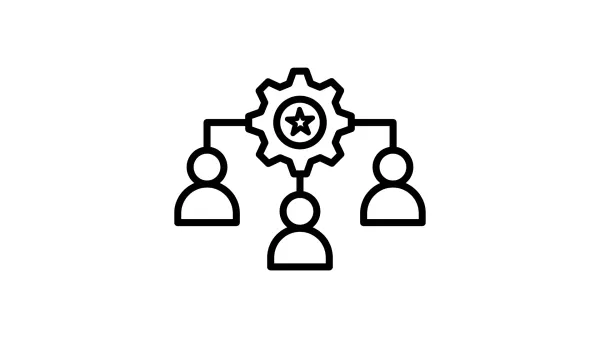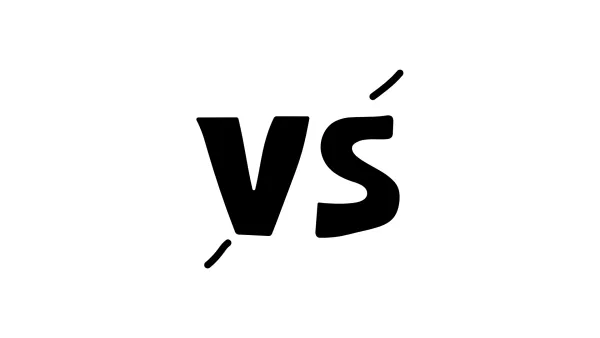Top 5 Lightweight Web Servers for Small Businesses
Choosing a lightweight web server is key for small businesses. Compare top options like Caddy, Lighttpd, and OpenLiteSpeed to boost performance while saving resources. Learn their strengths, best use cases, and how to pick the right one for your needs.

Table of Contents
- Introduction
- What Makes a Web Server Lightweight?
- Criteria for Selecting a Lightweight Web Server
- Top 5 Lightweight Web Servers
- Comparison of Features and Performance
- Best Use Cases for Each Web Server
- How to Choose the Right Web Server for Your Business
- Setting Up and Configuring a Lightweight Web Server
- Common Challenges and Solutions
- Future of Lightweight Web Servers
- Conclusion
- FAQs
Small businesses don’t need massive, resource-hogging web servers to get their websites up and running. Lightweight web servers are the perfect solution—they’re fast, efficient, and cost-effective. If you’re running a small business and want a server that gets the job done without breaking the bank, here are the top 5 lightweight web servers to consider.
Introduction
The Importance of Choosing a Lightweight Web Server
Your web server is the engine that powers your website. For small businesses, a lightweight server ensures fast performance without requiring expensive resources.
Why Small Businesses Need Efficient Server Solutions
Small businesses often operate with limited budgets and need hosting solutions that balance performance with affordability. Lightweight servers strike that balance perfectly.
What Makes a Web Server Lightweight?
Definition and Key Features
A lightweight web server is designed to minimize resource usage while delivering optimal performance. It typically offers:
- Low CPU and memory requirements.
- Simple configuration options.
- Fast processing for static and dynamic content.
Benefits of Lightweight Servers for Small Businesses
- Cost Savings: Reduced hardware and hosting expenses.
- Ease of Use: Simple to set up and manage.
- Scalability: Handles traffic efficiently as your business grows.
Criteria for Selecting a Lightweight Web Server
Ease of Use and Configuration
Choose a server with straightforward installation and configuration processes, especially if you lack technical expertise.
Resource Efficiency
Opt for servers that deliver high performance without consuming excessive CPU or memory.
Scalability for Growing Needs
Ensure the server can handle traffic spikes or an increasing number of users as your business expands.
Top 5 Lightweight Web Servers
1. Caddy: Simplicity and Automatic HTTPS
Caddy is user-friendly, with automatic HTTPS setup, making it perfect for startups and static sites.
- Strengths: Easy configuration, built-in HTTPS, and modern protocols.
- Best For: Small businesses needing quick deployment.
2. Lighttpd: Speed and Minimal Resource Usage
Lighttpd is lightweight in every sense, offering excellent performance with minimal resource use.
- Strengths: Low memory footprint and fast processing.
- Best For: Minimalistic applications and low-traffic sites.
3. OpenLiteSpeed: Free and Optimized for CMS Platforms
OpenLiteSpeed combines speed with optimization for CMS platforms like WordPress.
- Strengths: HTTP/3 support, built-in caching, and easy CMS integration.
- Best For: Small e-commerce sites and blogs.
4. H2O: Focused on HTTP/2 Performance
H2O is a modern server that excels in HTTP/2 and HTTPS performance.
- Strengths: Exceptional speed and efficient resource use.
- Best For: Businesses prioritizing modern protocols and fast load times.
5. Cherokee: User-Friendly Interface and Powerful Features
Cherokee offers a GUI-based configuration system, making it beginner-friendly.
- Strengths: Intuitive interface and versatile features.
- Best For: Teams needing a flexible yet simple solution.
Comparison of Features and Performance
Resource Usage: CPU and Memory Requirements
- Lighttpd: Lowest resource consumption.
- OpenLiteSpeed: Balanced efficiency and features.
Speed and Performance Benchmarks
- H2O: Leads in HTTP/2 and HTTPS performance.
- Caddy: Simple yet highly efficient.
Scalability and Traffic Handling
- OpenLiteSpeed: Scales well with growing traffic.
- Cherokee: Handles moderate traffic efficiently.
Best Use Cases for Each Web Server
- Caddy: Ideal for startups and static websites.
- Lighttpd: Perfect for small applications with low traffic.
- OpenLiteSpeed: The best choice for WordPress or e-commerce platforms.
- H2O: Great for modern, performance-focused sites.
- Cherokee: Suitable for small teams with diverse needs.
How to Choose the Right Web Server for Your Business
Matching Server Features with Business Needs
Evaluate your business requirements, such as traffic volume, content type, and technical expertise.
Budget and Resource Constraints
Choose a server that fits within your budget while delivering the performance you need.
Setting Up and Configuring a Lightweight Web Server
Basic Installation Steps for Each Server
- Follow the documentation for your chosen server.
- Use package managers like
aptoryumfor easy installation.
Key Configuration Tips for Optimal Performance
- Enable caching to improve load times.
- Use HTTPS for secure communication.
Common Challenges and Solutions
Handling Traffic Spikes with Lightweight Servers
Implement load balancing or caching to handle sudden traffic increases.
Troubleshooting Common Issues
Check server logs for errors and optimize configurations as needed.
Future of Lightweight Web Servers
Trends and Innovations Shaping the Market
- Increased adoption of HTTP/3 and modern protocols.
- Better integration with cloud-based hosting platforms.
Emerging Technologies for Small Business Hosting
- AI-driven optimizations for performance and resource allocation.
Conclusion
Choosing the right lightweight web server is crucial for small businesses. Whether you prioritize speed, scalability, or simplicity, there’s a solution for every need. Explore your options, test what works best, and build a reliable online presence with confidence.
Ready to power your business with the right web server? Let’s make it happen!
FAQs
What is a lightweight web server?
A lightweight web server is designed to use minimal resources while delivering high performance, making it ideal for small businesses.
Why do small businesses need lightweight web servers?
Lightweight servers save on costs, are easy to set up, and provide efficient performance, even on limited hardware.
Which is the easiest lightweight web server to configure?
Caddy and Cherokee are beginner-friendly due to their simple setups and intuitive interfaces.
What is the best lightweight server for WordPress sites?
OpenLiteSpeed is optimized for WordPress and other CMS platforms, offering built-in caching and excellent speed.
Can lightweight servers handle high traffic?
While they are resource-efficient, some like OpenLiteSpeed and H2O scale well with increased traffic, especially when optimized.



